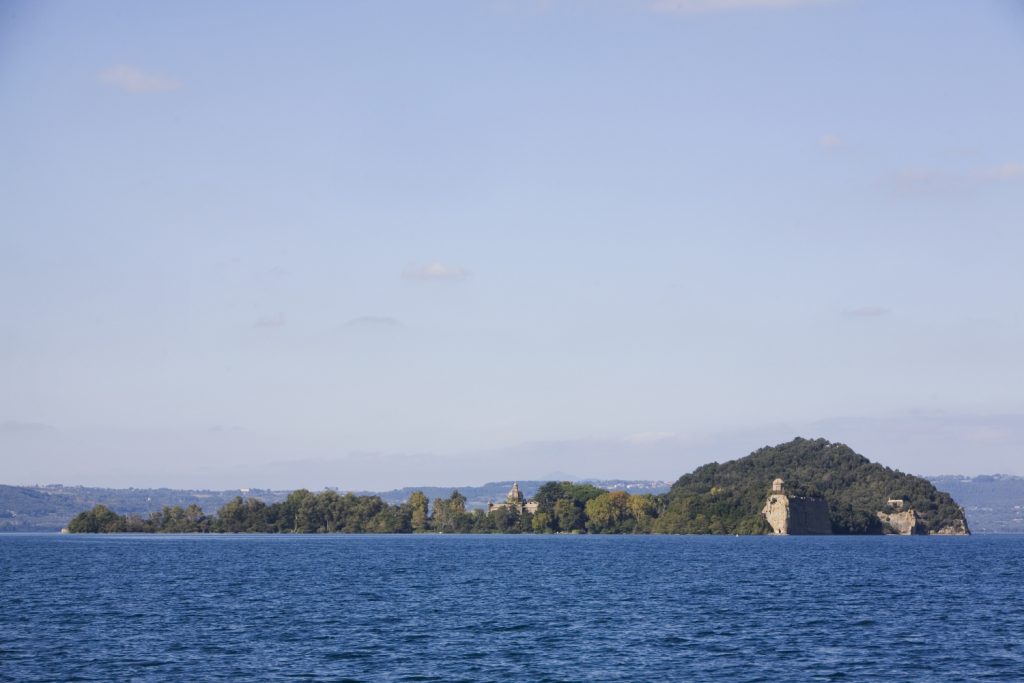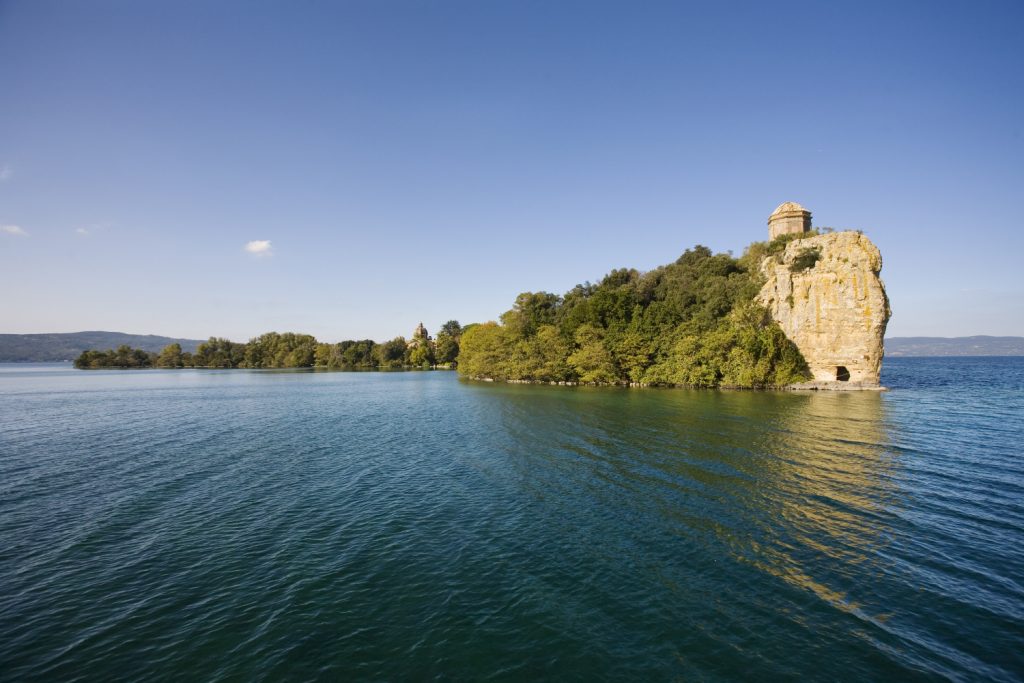- admin
- Nov, 09, 2024
- Places to visit
- Commenti disabilitati su 11. Bisentina Island


Isola Bisentina, along with Martana, adorns Lake Bolsena and has a history that has shaped its natural heritage since Etruscan times. In the Middle Ages, it served as a stronghold, a refuge from invasions, and a notorious prison (reminiscent of Dante’s “malta”). During the Renaissance, its residential and religious purpose was significantly influenced by Ranuccio III, the true founder of the Farnese dynasty. He chose the island as the family burial site, transforming it into a sort of fanum farnesianum—a natural temple and shrine for the Farnese.
In 1431, when Ranuccio granted the island in enfiteusi to the Franciscan Friars at the behest of Pope Eugene IV, Isola Bisentina became a small Holy Land. The friars transformed its highest point into a natural Via Crucis. This included significant sites such as Mount Tabor with the Oratory of the Transfiguration, Golgotha with Benozzo Gazzoli’s Crucifixion, Mount Sinai with the Temple of Santa Caterina, and the Garden of Olives featuring a church nestled among rocks overlooking the lake—an evocative place for reflection and prayer.
After a visit from Pope Pius II Piccolomini, who stayed at the Farnese Castle, five chapels were established on the island because the Pope permitted the construction of a fifth oratory dedicated in his honor. Pius II fondly recounts his visit to Isola Bisentina in his Commentaries, where he also mentions a grand boat race organized for this occasion by Gabriel Francesco Farnese, Ranuccio’s eldest son.
With the advent of Cardinal Alessandro Farnese’s cardinalate in 1493, the number of chapels on Isola Bisentina increased to seven. As noted by Vasari, Cardinal Farnese commissioned his architect Antonio da San Gallo the Younger to construct two temples on the island to complete this number. The first temple, located at the northern tip, was designed to be square on the outside and circular on the inside, symbolizing humanity’s striving for perfection. The second temple, situated at the southernmost point, was octagonal externally and circular internally, representing the attainment of divine perfection, symbolized by the number eight. It is important to remember that only Jesus Christ embodies perfection as both true God and true Man.
With Alessandro’s ascension to the papacy, Isola Bisentina underwent a significant transformation, becoming increasingly regarded as a sacred place for the Farnese family. Even with their acquisition of the Duchy of Parma and Piacenza, the Farnese remained connected to the sacred and mystical atmosphere of this location. Notably, Pope Paul III granted a plenary indulgence to those who visited the island with a spirit of prayer; for those unable to travel to Rome, visiting Isola Bisentina could serve as a substitute for visiting the seven Roman basilicas.
For those interested in delving deeper into the history and many curiosities surrounding Isola Bisentina, a book titled “Isola Bisentina – Giardino Tempio dei Farnese,” written by Professor Felicita Menghini Di Biagio, is available at the Navigation Museum.
Additionally, guided tours of the island can be arranged from Capodimonte’s port during spring and summer months with prior reservation—an experience not to be missed.